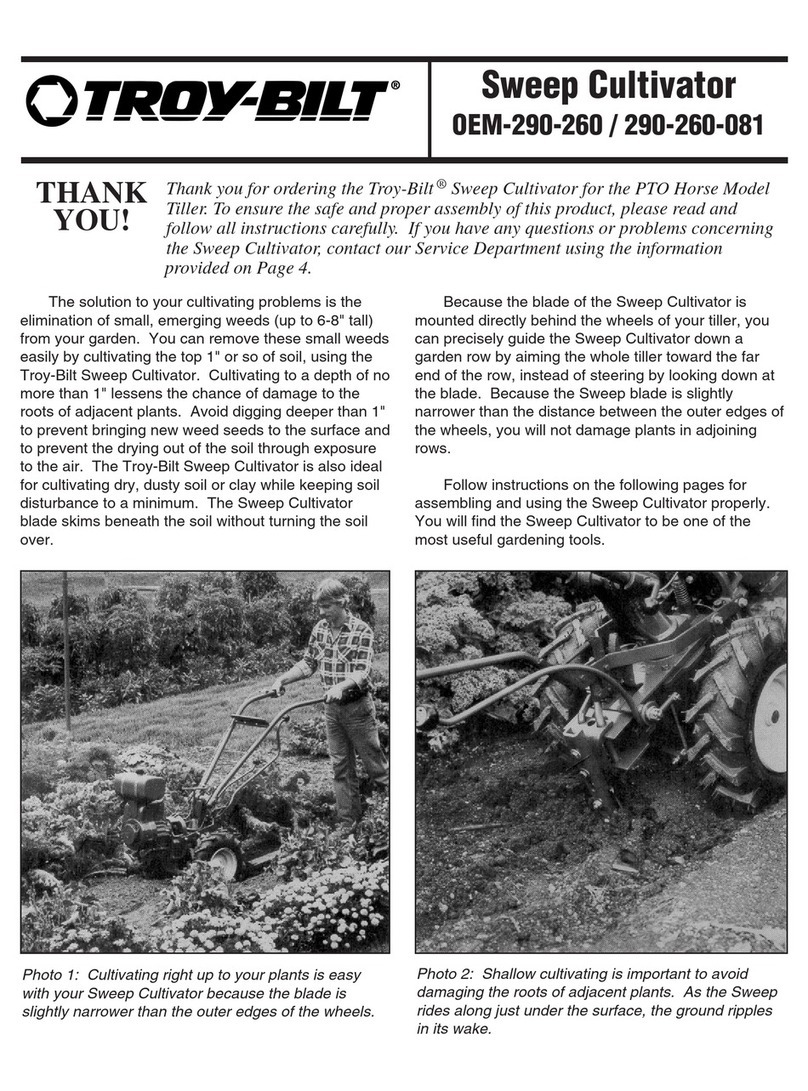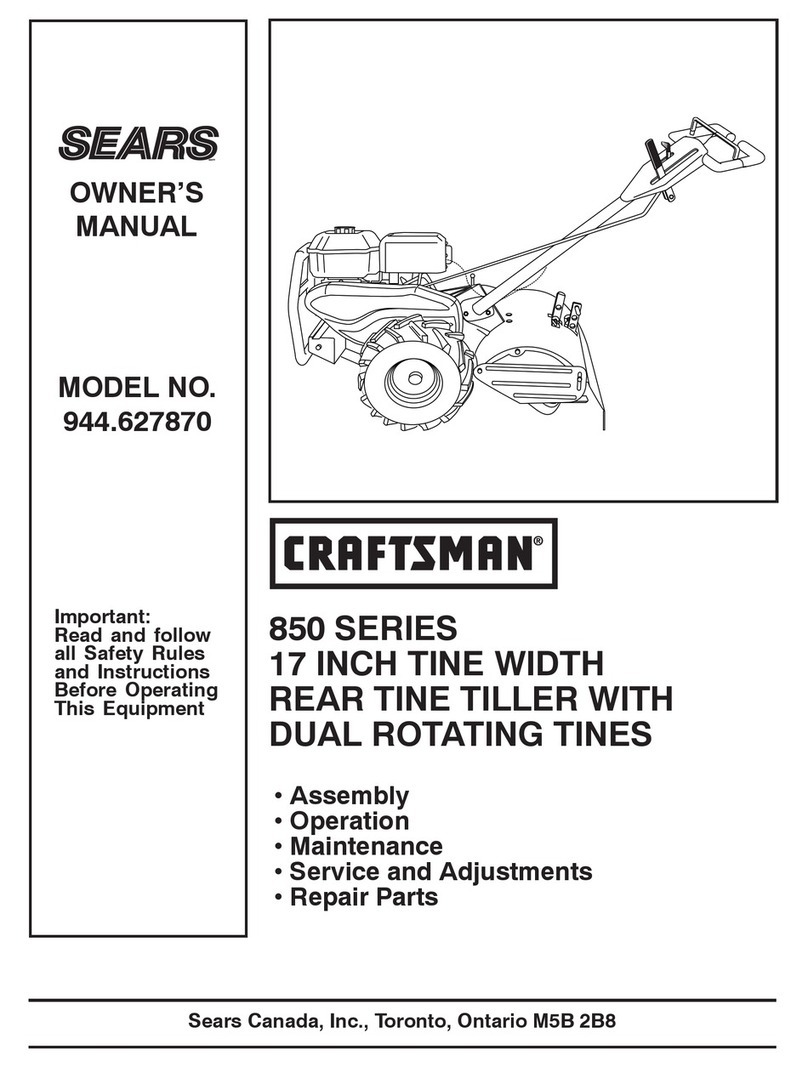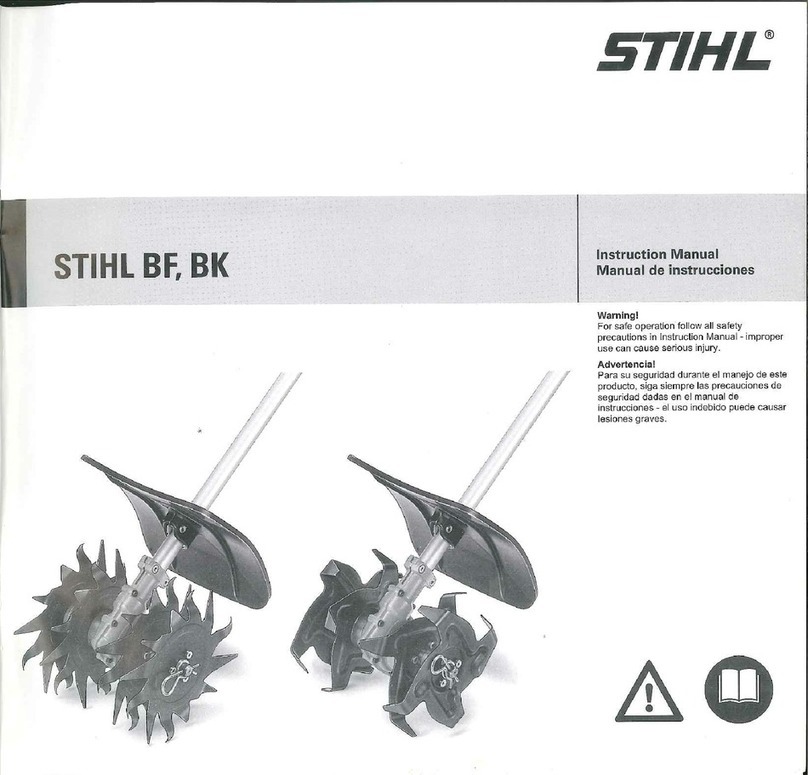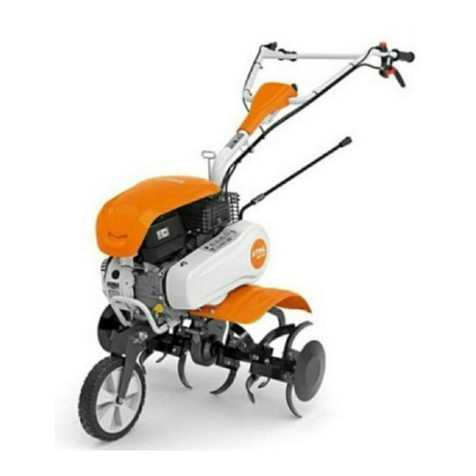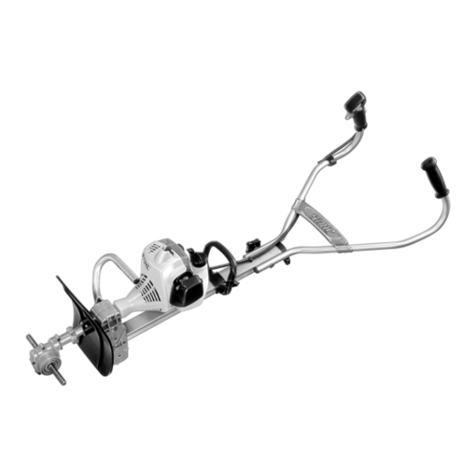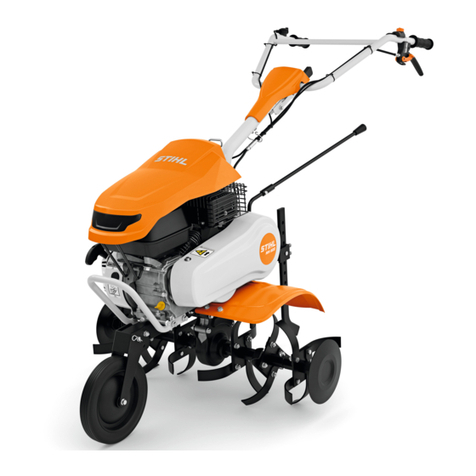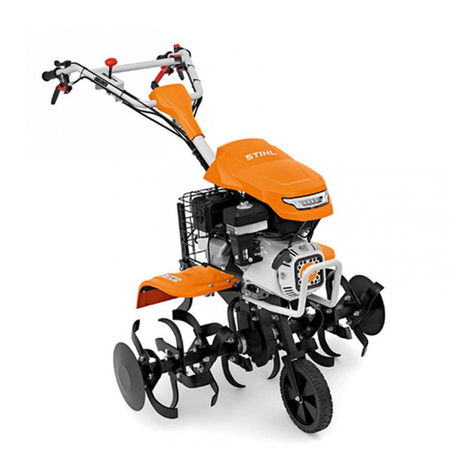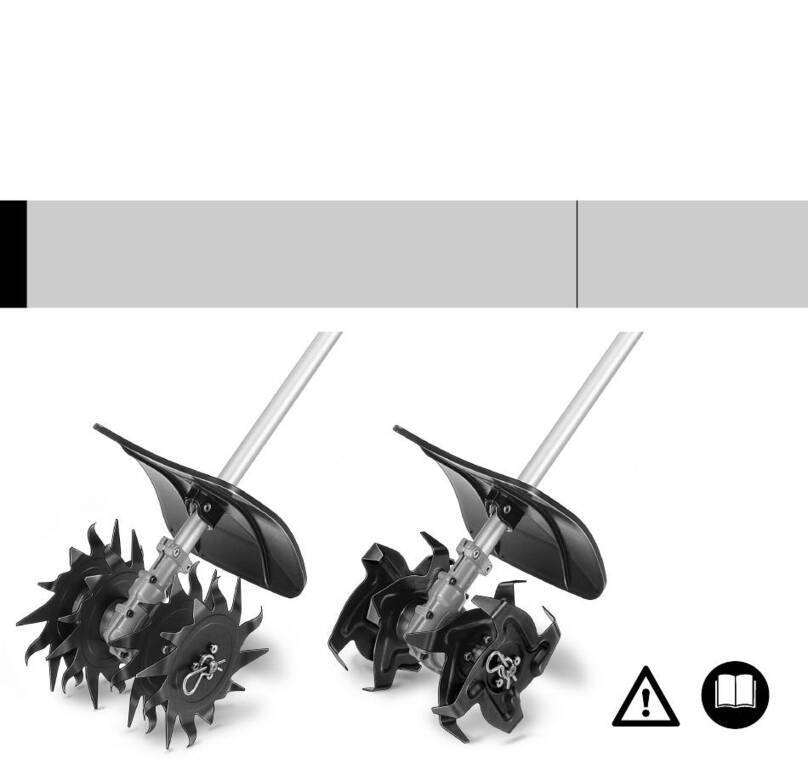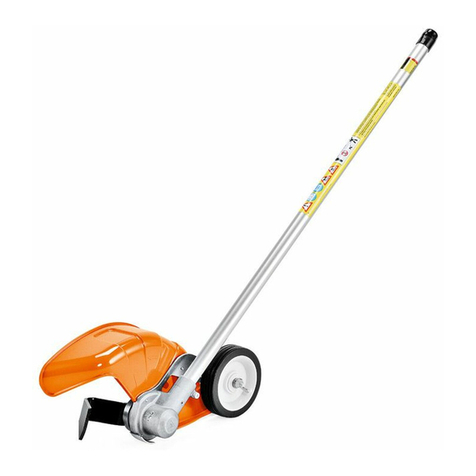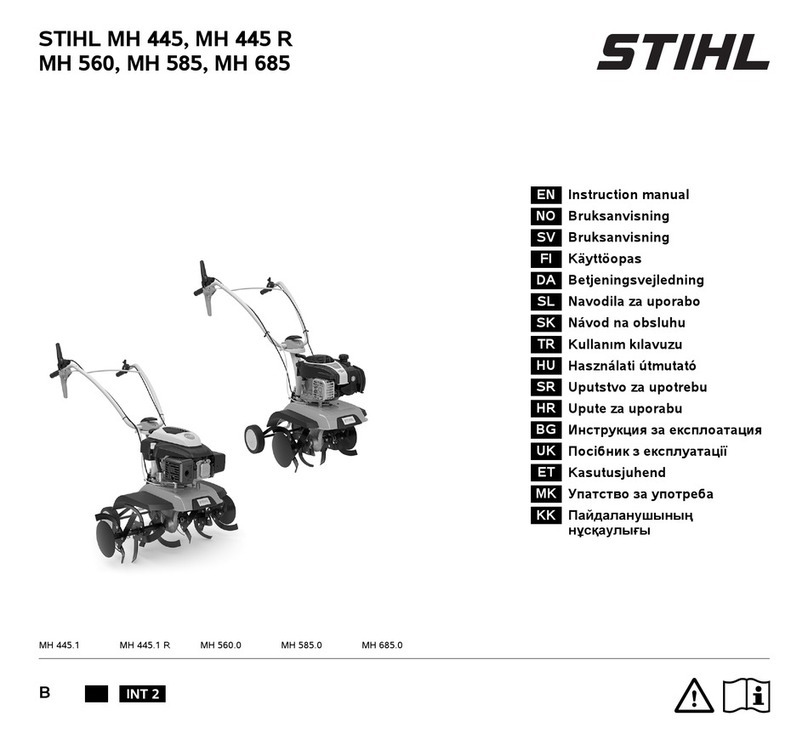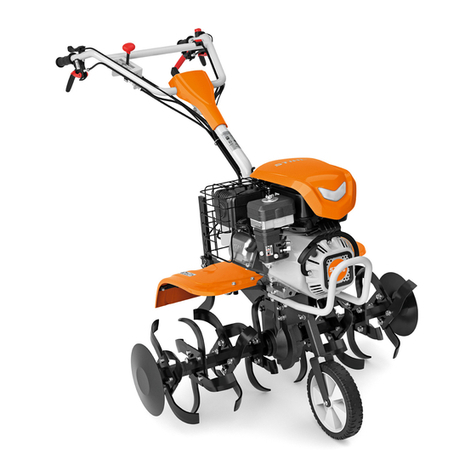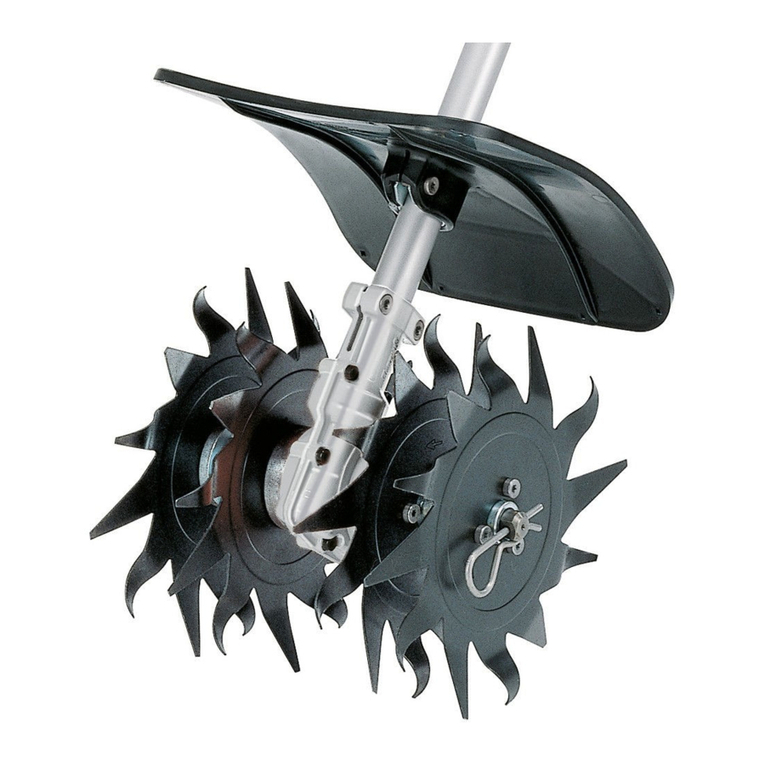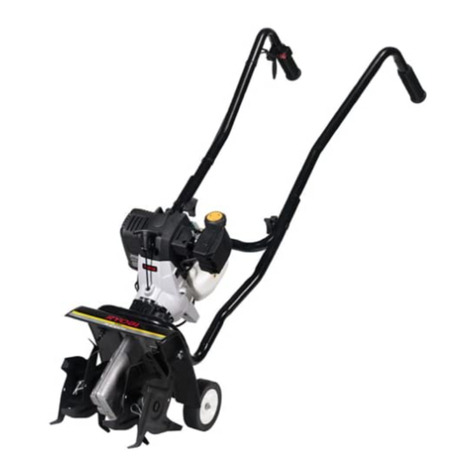
Watch out for obstacles: tree stumps, roots – risk
of tripping or stumbling!
Check the work site – rocks, metal objects etc.
may be caught up and ejected – risk of injury! -
and may damage the rotor blades.
To avoid the risk of electrocution,
never use your power tool in areas
where electrical lines are laid on the
surface or buried just below the sur‐
face.Striking and damaging such
lines with the attachment could cause
serious or even fatal injury.
Make sure you always have a firm and secure
footing.
Operate your power tool at normal walking pace
only.
Take particular care when working close to fen‐
ces, walls, stones, roots, trees and areas of
dense growth. The rotor blades may snag – risk
of injury!
Be extremely cautious when pulling the power
tool towards you because of the risk of injury
from contact with the rotating blades.
Be particularly alert and cautious when wearing
ear protection because your ability to hear warn‐
ings (shouts, alarms, etc.) is impaired.
Take breaks when you start getting tired or feel‐
ing fatigue – risk of accidents!
Work calmly and carefully – in daylight conditions
and only when visibility is good. Proceed with
caution, do not put others in danger.
If your power tool is subjected to unusually high
loads for which it was not designed (e.g. heavy
impact or a fall), always check that it is in good
condition before continuing work – see also
"Before Starting". Make sure the safety devices
are working properly. Never use a power tool
that is no longer safe to operate. In case of
doubt, contact a dealer.
Do not touch the rotor blades while the engine is
running. If the rotor blades become jammed by
an object, switch off the engine immediately
before attempting to remove the object – there is
otherwise a risk of injury!
Opening the throttle while the rotor blades are
blocked increases the load and reduces engine
speed. The clutch then slips continuously and
this causes overheating and damage to impor‐
tant components (e.g. clutch, polymer housing
components) – and this can increase the risk of
injury from the rotor blades running while the
engine is idling.
Check the rotor blades at regular short intervals
during operation or immediately if there is a
noticeable change in operating behavior:
–Shut off the engine, hold the machine
securely.
–Check condition and secure fitting; watch out
for cracks
–Replace damaged rotor blades immediately,
even if they have only superficial cracks.
Clean the rotor blades and deflector at regular
intervals during operation.
–Shut off the engine
–Use gloves
–Remove grass, weeds, clumps of soil, etc.
Switch off the engine before changing the rotor
blades – Risk of injury!
Do not continue using or attempt to repair dam‐
aged or cracked rotor blades by welding or
straightening – risk of deformation (out of bal‐
ance).
Particles or pieces may come off and hit the
operator or a bystander at a high speed – risk of
most severe injuries!
3.6 After Finishing Work
After finishing work or before leaving the power
tool unattended: Shut off the engine.
After finishing work, regularly clean dust, dirt, soil
and plant residue off the attachment – wear
gloves to reduce the risk of injury!
Do not use any grease solvents when cleaning.
After thoroughly cleaning, coat metal surface of
attachments with a corrosion inhibitor.
3.7 Maintenance and Repairs
Service the machine regularly. Do not attempt
any maintenance or repair work not described in
the instruction manuals of the basic power tool
and attachment. Have all other work performed
by a servicing dealer.
STIHL recommends that you have servicing and
repair work carried out exclusively by an author‐
ized STIHL servicing dealer. STIHL dealers are
regularly given the opportunity to attend training
courses and are supplied with the necessary
technical information.
Only use high-quality replacement parts in order
to avoid the risk of accidents and damage to the
3 Safety Precautions and Working Techniques English
0458-504-0121-B 5



